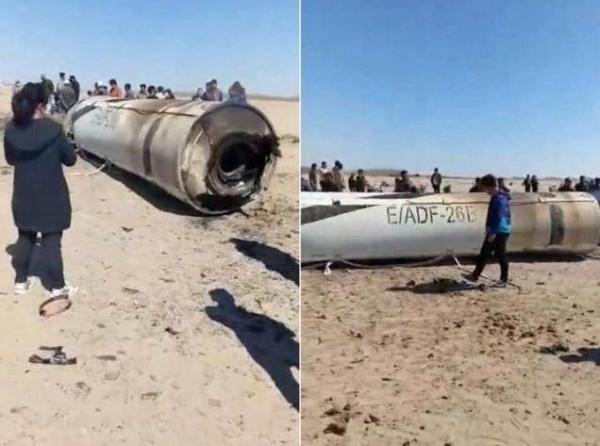On May 9, 2017, when answering a reporter’s question, the Information Bureau of the Ministry of Defense confirmed for the first time that the rocket army had recently conducted a new type of missile armament combat inspection in a certain sea area of Bohai Sea.
What did the Rocket Army fight into the sea? Military fans who are familiar with Rocket Army equipment must be able to guess that this is an anti-ship ballistic missile flight test, because the target ship is at sea, and it will naturally be launched from land to sea. Moreover, it is obviously not the model “Dongfeng-21D” that has been developed since the 1980 s, however, it should be the first anti-ship model of “Dongfeng-26” displayed in China’s military parade on the 70th anniversary of the victory of the anti-Japanese War in 2015.
On September 3, 2015, the second artillery team composed of “Dongfeng-26” (which had not been restructured into Rocket Army at that time) passed slowly from the door of Tian’an. This is the first public appearance of this type of missile. As a missile with both nuclear and normal functions, it means that it can flexibly replace the warhead with different damage effects to realize “multiple functions of one bomb”.


Recently, the suspected missile wreckage printed with the words “E/ADF-26B” circulated on the Internet. A Chinese military expert, who did not want to be named, told the Global Times reporter on the 10th that it was certain that the letter B indicated that this was the new model in the “Dongfeng-26” series of ballistic missiles.
China’s first “both nuclear and normal” missile
According to CCTV’s report in the military parade, “Dongfeng-26” is China’s first “both nuclear and normal” missile, that is, it can throw nuclear warhead or conventional warhead. Some readers may ask, “Dongfeng-21” also includes nuclear missile models and conventional missile models, why not “both nuclear and normal”? The author believes that this is related to the degree of generalization of missiles.
The design idea of “Dongfeng-26” should be closer to the design of “one bullet multi-head” widely used by conventional tactical ground-to-ground missiles and rockets in our country, and the hardware such as interfaces of different warhead should be universal, for quick replacement. On the other hand, “Dongfeng-21” cannot realize functional conversion through interchangeable warhead between different models. In order to achieve different combat purposes, each model of “Dongfeng-21” is completely different from the overall design. In addition, the development time span is large, and the technologies adopted by various models are also different.
First of all, the four models of “Dongfeng-21” are different only in engine shell materials. The basic two-stage shell adopts alloy steel, and the extended-range two-stage shell is replaced with glass fiber reinforced resin base material. The later model may use aramid fiber reinforced material. Secondly, the hardware interfaces of several warhead are not universal. Finally, there are also differences among different types of flight control, guidance and missile-mounted electrical separation systems. Therefore, even without considering the differences in software, the four models cannot be exchanged only in hardware; To some extent, it can even be said that the “Dongfeng-21” series is completely four completely different models.
Triggering “misjudgment” is actually a false proposition.
When China was developing “DongFeng 31”, the first chief engineer once put forward the “three-oriented” ideas of “standardization”, “Serialization” and “generalization. This idea has become the top-level design core of the second generation strategic missile in our country through practice, and “both nuclear and normal” is the further development of this idea. However, this kind of progress has also raised questions about the operational strategy of China’s new generation of ballistic missiles.
The biggest question of Western scholars about “both nuclear and normal” is that this kind of design is more likely to cause misjudgment. Their view is that if China uses the Dongfeng-26 conventional model to strike each other in the conventional war with other nuclear countries, since the other four nuclear countries in the world pursue the offensive (or active defensive) nuclear strategy of “first use nuclear weapons, they will launch an” early warning counterattack “before the conventional warhead of Dongfeng-26 lands, that is, they will not judge whether they have suffered a nuclear strike from the damage effect, nuclear missiles are launched only according to the missile attack alert provided by long-range early warning radar or space-based infrared early warning satellite, because these detection methods cannot distinguish whether this is a conventional strike or a nuclear strike from trajectory at all. As China pursues the counterattack nuclear strategy of “not using nuclear weapons first”, once other nuclear countries carry out nuclear strikes against China, China will resolutely carry out nuclear counterattack. In this way, the conventional war between the two countries will be upgraded to nuclear war.
In fact, this judgment of unexpected nuclear war is not aimed at China’s “theoretical innovation”. During the Cold War, the United States and the Soviet Union also faced such problems and gave the answer. The “omahawk” long-range cruise missile of the United States is also a kind of “both nuclear and normal” weapon. In order to avoid misjudgment, the United States simply stipulated that the nuclear warhead “omahawk” should be used in the war against the Soviet Union “, when fighting against other countries, the conventional warhead” omahawk “was used and this division was informed to the Soviet Union. Although this “de-regularization” strike strategy against the Soviet Union fundamentally eliminated misjudgment, it also reduced the flexibility of the US military in combat.
In addition, the SS-21 short-range ballistic missile of the Soviet Union and the “Pershing”-II short-range ballistic missile of the United States are also weapons with both nuclear and normal capabilities, but the two sides have no risk of misjudgment on this issue. This is because these two weapons are only deployed at the forefront of NATO and Covenant, and are used to attack each other’s low-depth high-value targets in the early stage of the war. In wartime, they will adopt “fire Collection attack, the large-scale short-term assault mode of key strike. In this way, there is neither the possibility of misjudgment when attacking countries outside Europe nor the misjudgment caused by sporadic test flights (the test will not be conducted in the Allies, but only in the local shooting range of the two countries). However, in view of how to distinguish between conventional models and nuclear models, the treatment methods of the United States and the Soviet Union are not “humane”. Specifically, it is to lower the “threshold” for the use of tactical nuclear weapons so that they can be used for attack or defense alone or in combination with conventional weapons, thus distinguishing them from strategic nuclear weapons.
Specific to the actual situation in China, “Dongfeng-26” obviously will not cause misjudgment problems. The Chinese government has made it clear in the “statement” released publicly to the whole world after the first atomic bomb exploded: “China will not use nuclear weapons first at any time and under any circumstances.” This means that China will never use nuclear weapons first in conventional wars with nuclear countries. Therefore, “Dongfeng-26”, which carries out the strike task, must be a conventional or anti-ship type, only in nuclear counterattack operations will the nuclear model be used.
In fact, because the United States, the Soviet Union and other countries pursue offensive nuclear strategies, there is no “threshold” for their use of nuclear weapons theoretically, and they can completely carry out nuclear strikes at the initial stage of the war. Therefore, their so-called “questioning” and “misjudgment” are nothing more than pushing the charges of “shooting the first shot” and actively upgrading nuclear war to China.
2826
on May 9, 2017, when answering a reporter’s question, the Information Bureau of the Ministry of Defense confirmed for the first time that the rocket army had recently conducted a new type of missile armament combat inspection in a certain sea area of Bohai Sea. What did the Rocket Army fight into the sea? Military fans who are familiar with Rocket Army equipment must be able to guess this